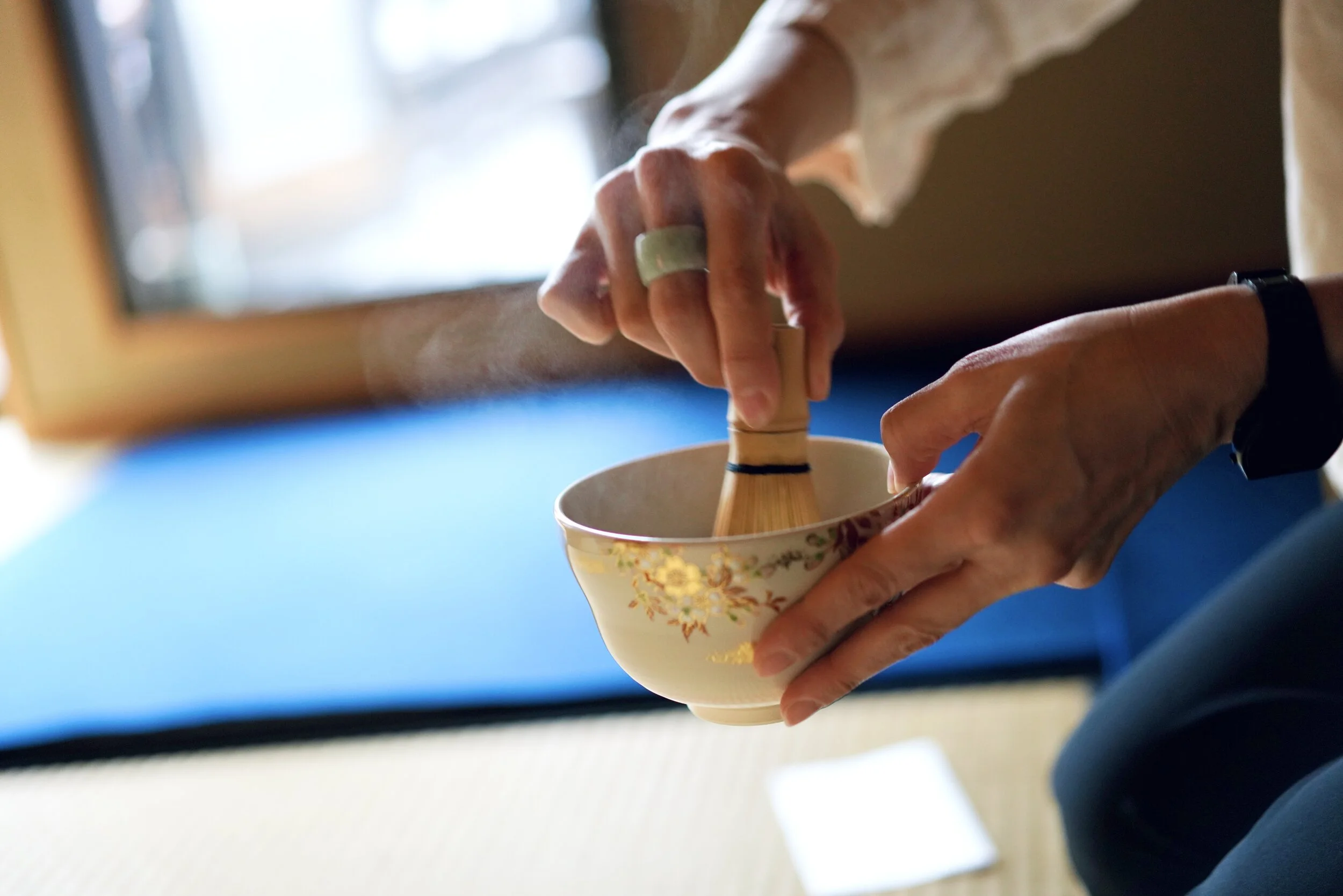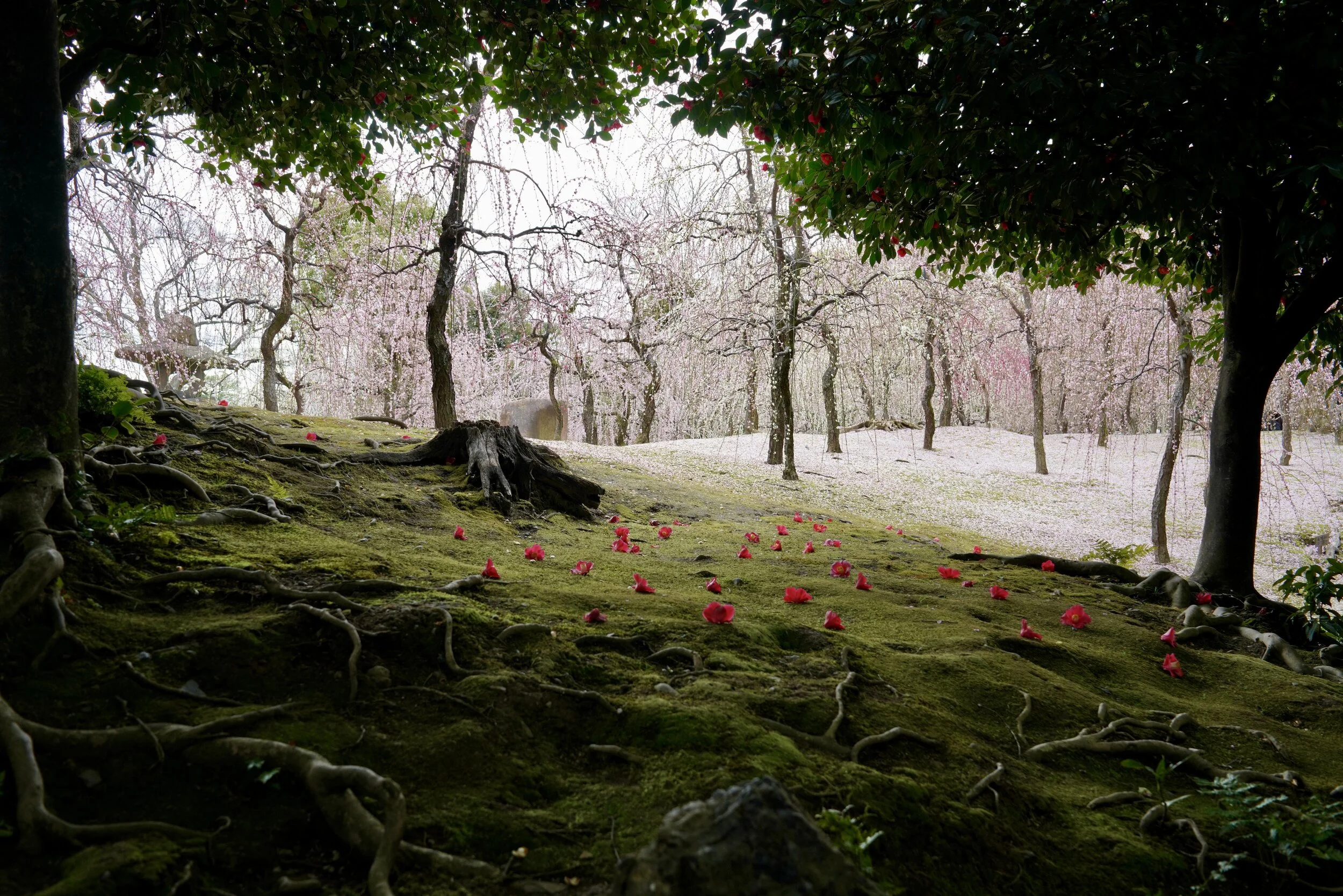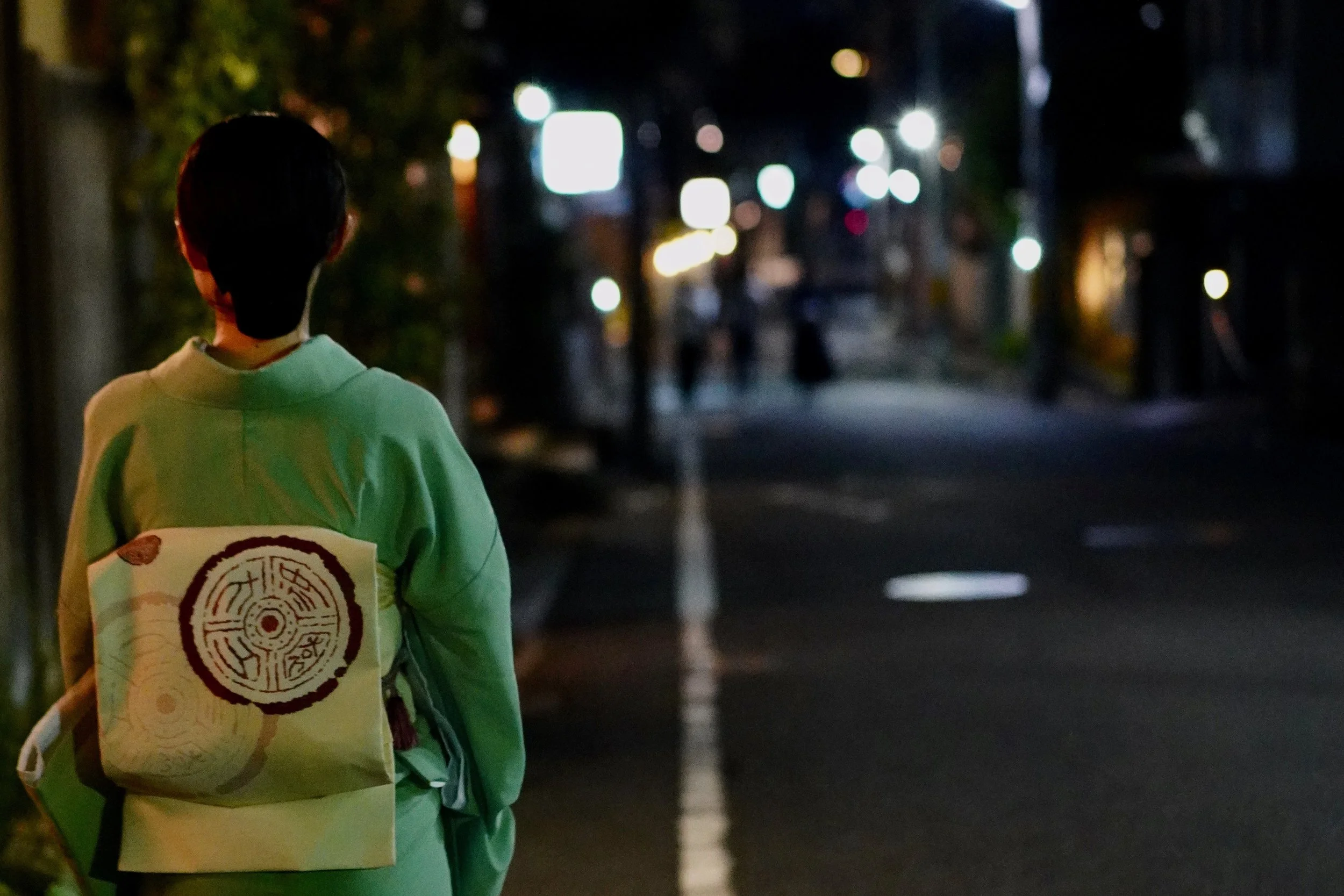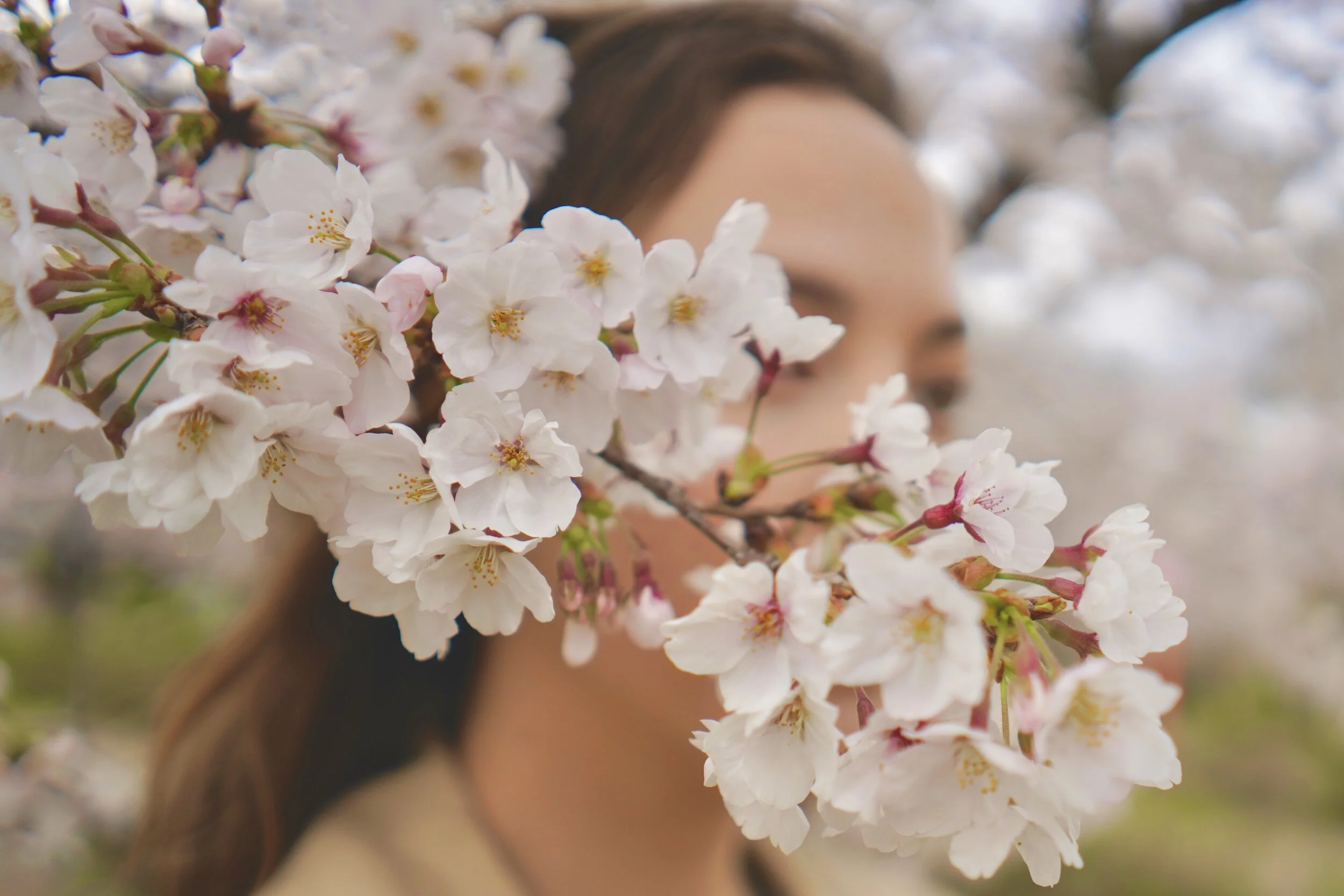The Way Of Tea
Kyoto transforms in the rain. I remember how the streets smelled, sharpened by springtime showers. Our umbrellas sheltered us on a slow Saturday afternoon stroll, as droplets of water slid off the curved edges, pelting our shoes like pebbles. Kyoto was a city deserted before our eyes, emptied of normalcy from the ripples of a pandemic; natives even noted it’s how it once was 40 years ago. My husband and I recognized, with every step along the pathways of dampened stone, we would never experience Japan like this again. We lived in this extraordinary country when noise turned tranquil, and a haunting calmness washed over like dew on the verge of morning. We felt the rarity of everything; each bend of an alley without another soul to brush past, every sidewalk of a street eerily abandoned. Japan became our home when the world grew still. Silence, except for the cadence of raindrops colliding with earth, playing nature like notes on a piano.
I could sense something mysterious drifting through the misty air that day, morphing time to flow in a way other than forward, capturing a stillness of the past and making this day feel like one existing a hundred years ago. We found ourselves unexpectedly time traveling through the foggy canvas of a quiet, ordinary afternoon. Japan is a place where the past exists in its every breath, woven amongst the ancient architecture and immortalized with each cherished tradition. Jeremy and I were on our way to witness one of Japan’s most established and revered traditions, the Japanese tea ceremony.
We collapsed the skeletons of our umbrellas, shaking off the clinging moisture, as we crouched below the entrance curtain, known as a noren, marking the entrance to the teahouse of Camellia Tea Ceremony. We were approached by a woman with raven-slicked hair and porcelain skin, her smile conveyed from the crescents of her eyes and the rest half-hidden behind a mask. We exchanged bows and names, as she gently introduced herself as Nao. She voiced that she had studied the skilled artistry of the Japanese tea ceremony for years, yet Nao believed that the knowledge behind every nuanced movement was infinite, and a mastery of the technique would be an ever-acquiring pursuit for the rest of her life.
Sado translates to “The Way of Tea,” a Japanese custom dating back to the 9th century, far greater than merely brewing a cup of tea. Sado is the ceremonial practice of preparing, presenting, and partaking in matcha, while above all, preserving the foundation of Zen Buddhism. “The Way of Tea” is, essentially, the Japanese way of life; devoting presence and harmony behind every action, expressing hospitality and gratitude towards every encounter, and highlighting the refined beauty within everyday habits.
Japan was first introduced to tea by way of China, brought back by monks and enjoyed only by the upper class for medicinal purposes. Progressively, the setting for the Japanese tea ceremony served as a backdrop for political alliances amongst the warrior class, with formal gatherings exclusive to military elite and ceremonial customs performed by samurai. Women were forbidden from participating until 150 years ago. Sado eventually became infused by the principles of Zen Buddhism, renewed with a virtuous significance, simplifying and elevating the Japanese tea ceremony’s essence.
Wa-Kei-Sei-Jaku are the four Buddhist virtues centered at the heart of Sado, fiercely honored within the walls of the tatami-floored tearoom, and consciously carried out as a divine discipline throughout one’s daily life.
Wa symbolizes “Harmony.” A wave of harmonious kindheartedness must flow between host and guests without waver; every exchange emanating politeness, pleasantness, and goodwill, with one’s own political views restrained as one’s own.
Kei depicts “Respect.” A collective respect must be earnestly granted for every person present, regardless of any disparities of age, status, wealth, or education.
Sei represents “Purity.” A purification of our hearts and minds must converge while observing every stage of the ceremony, with our drifting thoughts and emotions re-anchoring only to the experience of the ceremony itself, and nothing else.
Jaku signifies “Tranquility.” An aura of tranquility must be nurtured, peacefully permeating throughout the air of the tearoom, rewarding everyone with a meditatively-moving experience.
Nao’s hands moved like the hands of a ballerina, each finger placed in exact position, every moment of pause deliberate and breathtaking. I could hear our breaths rise and fall with a steady synchronicity, then a touch of tool to the bowl, and a steam of water pooling over powdered green tea. She whisked the mixture with vigor, magnificently still like a statue, except for the flickers of her fingers. We were mesmerized by her rapid brushstrokes, a fury of frothy brilliant green. Nao was an artist, a painter with a bamboo whisk as her brush and a tearoom as her canvas. She rotated the bowl twice clockwise, presenting us with the most beautiful side of the bowl, conveying humility and appreciation to us as her guests. We bowed, then brought bowl to lips, matcha to mouth, and sipped our first taste. Mmm. Warm, bitter, rich, smooth, healing. Nao smiled and whispered to us, “Ichi-go-ichi-e.”
Ichi-Go-Ichi-E いちごいちえ literally transcribes as “One moment, one encounter.” A Japanese concept of cherishing the unrepeatable architecture of any given moment; a philosophy emphasizing how any particular meeting can never be, in every respect, recreated, thus every encounter is, in actuality, once-in-a-lifetime.
We bid farewell to Nao, ending our shared afternoon with a final bow, profoundly aware that even if we returned to the very same teahouse and reunited with her someday again, our experience would never quite be the same. Maybe the warmth of the sun would highlight the shadows of Kyoto’s buildings and the soothing soundtrack of this rainy Saturday would be a distant memory. Maybe the city, once again, would be overflowing with tourists and the hollowness of Kyoto on this day would only exist as a brief moment to be remembered. Maybe every possible circumstance would be slightly altered; our moods, our thoughts, the air, and the light, and I understood, with clear eyes, that this day would never be repeated again.
Cheers,
Tera
















